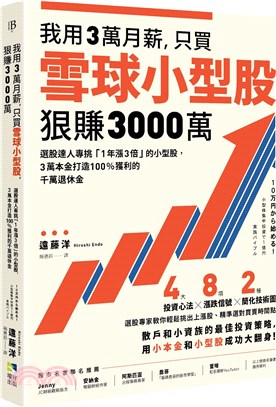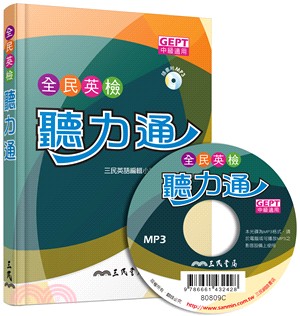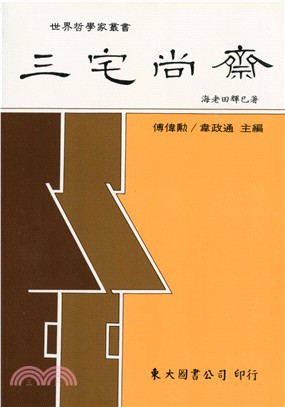定價
:NT$ 7200 元若需訂購本書,請電洽客服 02-25006600[分機130、131]。
相關商品
商品簡介
作者簡介
目次
商品簡介
Interpreting a geological setting for the purposes of engineering design and construction requires knowledge of geological engineering and engineering geology, leading to integrated engineering solutions which take into account both ground conditions and environment. This textbook, extensively illustrated, covers the subject area of geological engineering in four sections:
* Fundamentals: soil mechanics, rock mechanics and hydrogeology
* Methods: site investigations, rock mass characterization and engineering geology mapping
* Applications: foundations, slope stability, tunnelling, dams, reservoirs and earth works
* Geohazards: landslides, earthquake hazards and prevention and mitigation of geological hazards
Geological Engineering can serve as a basic reference work for practising engineering geologists, geological and geotechnical engineers, geologists, civil and mining engineers and those professionals involved in design and construction of foundations, tunneling, earth works and excavations for infrastructures, buildings, mining operations, etc.
As a textbook it develops an extensive teaching program of geological engineering and is designed for undergraduate and postgraduate students and academics. Covering basic concepts up to the newest methodologies and procedures in geological engineering, the book is illustrated with many educational working examples and graphical materials.
* Fundamentals: soil mechanics, rock mechanics and hydrogeology
* Methods: site investigations, rock mass characterization and engineering geology mapping
* Applications: foundations, slope stability, tunnelling, dams, reservoirs and earth works
* Geohazards: landslides, earthquake hazards and prevention and mitigation of geological hazards
Geological Engineering can serve as a basic reference work for practising engineering geologists, geological and geotechnical engineers, geologists, civil and mining engineers and those professionals involved in design and construction of foundations, tunneling, earth works and excavations for infrastructures, buildings, mining operations, etc.
As a textbook it develops an extensive teaching program of geological engineering and is designed for undergraduate and postgraduate students and academics. Covering basic concepts up to the newest methodologies and procedures in geological engineering, the book is illustrated with many educational working examples and graphical materials.
作者簡介
Luis I. González de Vallejo; Professor of Geological Engineering at the Complutense University of Madrid, where he is also Director of the MSc Courses in Geological Engineering. He has dedicated his professional career in geological engineering to consulting, research and teaching, and he has conducted a large number of geological and geotechnical investigations for the design and construction of tunnels, dams and foundations in Spain and Central and South America, including landslide and earthquake hazard analysis, large excavations and site assessment for nuclear power plants and radioactive waste disposal.He has written over 120 papers in journals and proceedings as well as five books. Associate Editor of Soils and Rocks and Member of the Editorial Board of several scientific journals, he has been invited to present the 2nd Mariano Ruiz Vazquez Lecture, at the Academy of Engineering of Mexico, in 2007, and the XXVII Manuel Rocha Lecture, at the Portuguese Geotechnical Society, in 2010.
Mercedes Ferrer; Senior Research Officer at the Geological Survey of Spain and Associate Lecturer on Rock Mechanics at the Complutense University of Madrid, where she graduated in Geological Sciences and obtained her doctorate for her research on the deformability and failure mechanisms of soft rocks. She has carried out research projects on geological hazards in Spain, Italy and Central and South America, particularly on landslides and geo-hazard mapping for urban planning, mitigation and prevention purposes. She has written over 100 papers and research reports on geological hazards, landslides and slope stability. At present she is leading a research project on the causes and failure mechanisms of the mega-rockslides of volcanic islands flanks.
Mercedes Ferrer; Senior Research Officer at the Geological Survey of Spain and Associate Lecturer on Rock Mechanics at the Complutense University of Madrid, where she graduated in Geological Sciences and obtained her doctorate for her research on the deformability and failure mechanisms of soft rocks. She has carried out research projects on geological hazards in Spain, Italy and Central and South America, particularly on landslides and geo-hazard mapping for urban planning, mitigation and prevention purposes. She has written over 100 papers and research reports on geological hazards, landslides and slope stability. At present she is leading a research project on the causes and failure mechanisms of the mega-rockslides of volcanic islands flanks.
目次
PART I. FUNDAMENTALS
Chapter 1 - Introduction to Geological Engineering
1.1 Definition and Importance of Geological Engineering
1.2 The Geological Environment and its Relation with Engineering
1.3 Geological Factors and Geotechnical Problems
1.4 Methods and Applications in Engineering Geology
1.5 Information Sources in Engineering Geology
1.6 How this Book is Structured
Recommended Reading/References
Chapter 2 - Soil Mechanics and Engineering Geology of Sediments
2.1 Introduction
2.2 Soil Description and Classification
2.3 Flow of Water through Soils
2.4 Effective Stress
2.5 Consolidation and Compressibility
2.6 Shear Strength of Soils
2.7 Influence of Mineralogy and Fabric on the Geotechnical Properties of Soils
2.8 Engineering Geology Characteristics of Sediments
2.9 Problematic Soils
Recommended Reading/References
Chapter 3 - ROCK MECHANICS
3.1 Introduction
3.2 Physical and Mechanical Properties of Rocks
3.3 Stress and Strain in Rocks
3.4 Strenght and Deformability of Intact Rock
3.5 Discontinuities
3.6 Strenght and Deformability of Rock Masses
3.7 In situ Stress
3.8 Rock Mass Classifications
Recommended Reading/References
Chapter 4 - HYDROGEOLOGY
4.1 Hydrogeological Behaviour of Soils and Rocks
4.2 Hydrogeological Parameters
4.3 Flow. Darcy's Law and Fundamental Flow Equations in Porous Media
4.4 Evaluation Methods for Hydrogeological Parameters
4.5 Solution Methods
4.6 Chemical Properties of Water
Recommended Reading/References
PART II. METHODS
Chapter 5 - SITE INVESTIGATIONS
5.1 Planning and Design
5.2 Preliminary Investigations
5.3 Engineering Geophysics
5.4 Boreholes, Trial Pits, Trenches and Sampling
5.5 In situ Tests
5.6 Geotechnical Instrumentation
Recommended Reading/References
Chapter 6 - ROCK MASS DESCRIPTION AND CHARACTERISATION
6.1 Methodology
6.2 Description and Zoning
6.3 Intact Rock Characterisation
6.4 Description of Discontinuities
6.5 Rock Mass Parameters
6.6 Rock Mass Classification and Characterisation
Recommended Reading/References
Chapter 7 - ENGINEERING GEOLOGICAL MAPPING
7.1 Definition
7.2 Types of Maps
7.3 Mapping Methods
7.4 Data Collection
7.5 Applications
Recommended Reading/References
PART III. APPLICATIONS
Chapter 8 - FOUNDATIONS
8.1 Introduction
8.2 Shallow Foundations
8.3 Deep Foundations
8.4 Foundations in Rock
8.5 Foundations in Complex Geological Conditions
8.6 Site Investigation
Recommended Reading/References
Chapter 9 - SLOPES
9.1 Introduction
9.2 Site Investigations
9.3 Factors Influencing Slope Stability
9.4 Types of Slope Failure
9.5 Stability Analysis
9.6 Stabilization Measures
9.7 Monitoring and Control
9.8 Slope Excavation
Recommended Reading/References
Chapter 10 - TUNNELS
10.1 Introduction
10.2 Site Investigation
10.3 Influence of Geological Conditions
10.4 Geomechanical Design Parameters
10.5 Rock Mass Classifications for Tunneling
10.6 Tunnel Support Design using Rock Mass Classifications
10.7 Excavability
10.8 Tunnel Excavation and Support Methods in Rock
10.9 Tunnel Excavation and Support Methods in Soil
10.10 Geological Engineering during Tunnel Construction
Recommended Reading/References
Chapter 11 - DAMS AND RESERVOIRS
11.1. Introduction
11.2 Types of Dams and Auxiliary Structures
11.3 Site Investigation
11.4 Engineering Geology Criteria for Dam Selection
11.5 Geological Materials for Dam Construction
11.6 Reservoir Water Tightness
11.7 Permeability of Dam Foundations
11.8 Reservoir Slope Stability
11.9 Engineering Geological Conditions for Dam Foundations
11.10 Seismic Actions and Induced Seismicity
Recommended Reading/References
Chapter 12 - EARTH STRUCTURES
12.1 Introduction
12.2 Design Methodology
12.3 Materials
12.4 Implementation and Control
12.5 Embankments on Soft Soils
12.6 Embankments on Slopes
Recommended Reading/References
PART IV. GEOLOGICAL HAZARDS
Chapter 13 - LANDSLIDES AND OTHER MASS MOVEMENTS
13.1 Introduction
13.2 Slope Movements
13.3 Investigation of Landslides
13.4 Corrective Measures
13.5 Collapse and Subsidence
13.6 Prevention of Risks from Mass Movements
Recommended Reading/References
Chapter 14 - SEISMIC HAZARD
14.1 Introduction
14.2 Faults and Earthquakes
14.3 Seismicity Studies
14.4 Seismic Hazard Analysis
14.5 Seismic Site Response
14.6 Ground Effects Induced by Earthquakes
14.7 Applications to Geological Engineering
Recommended Reading/References
Chapter 15 - PREVENTION OF GEOLOGICAL HAZARDS
15.1 Geological Hazards
15.2 Hazard, Risk and Vulnerability
15.3 Safety Criteria in Geological Engineering
15.4 Prevention and Mitigation of Geological Hazards
15.5 Hazard and Risk Maps
Recommended Reading/References
Appendix A: Charts for Circular and Wedge Failure Analysis
Appendix B: Pressure Units Conversion Chart
Appendix C: Symbols and Acronyms
Appendix D: List of Boxes
Appendix E: Permissions to Reproduce Figures and Tables
Index
Chapter 1 - Introduction to Geological Engineering
1.1 Definition and Importance of Geological Engineering
1.2 The Geological Environment and its Relation with Engineering
1.3 Geological Factors and Geotechnical Problems
1.4 Methods and Applications in Engineering Geology
1.5 Information Sources in Engineering Geology
1.6 How this Book is Structured
Recommended Reading/References
Chapter 2 - Soil Mechanics and Engineering Geology of Sediments
2.1 Introduction
2.2 Soil Description and Classification
2.3 Flow of Water through Soils
2.4 Effective Stress
2.5 Consolidation and Compressibility
2.6 Shear Strength of Soils
2.7 Influence of Mineralogy and Fabric on the Geotechnical Properties of Soils
2.8 Engineering Geology Characteristics of Sediments
2.9 Problematic Soils
Recommended Reading/References
Chapter 3 - ROCK MECHANICS
3.1 Introduction
3.2 Physical and Mechanical Properties of Rocks
3.3 Stress and Strain in Rocks
3.4 Strenght and Deformability of Intact Rock
3.5 Discontinuities
3.6 Strenght and Deformability of Rock Masses
3.7 In situ Stress
3.8 Rock Mass Classifications
Recommended Reading/References
Chapter 4 - HYDROGEOLOGY
4.1 Hydrogeological Behaviour of Soils and Rocks
4.2 Hydrogeological Parameters
4.3 Flow. Darcy's Law and Fundamental Flow Equations in Porous Media
4.4 Evaluation Methods for Hydrogeological Parameters
4.5 Solution Methods
4.6 Chemical Properties of Water
Recommended Reading/References
PART II. METHODS
Chapter 5 - SITE INVESTIGATIONS
5.1 Planning and Design
5.2 Preliminary Investigations
5.3 Engineering Geophysics
5.4 Boreholes, Trial Pits, Trenches and Sampling
5.5 In situ Tests
5.6 Geotechnical Instrumentation
Recommended Reading/References
Chapter 6 - ROCK MASS DESCRIPTION AND CHARACTERISATION
6.1 Methodology
6.2 Description and Zoning
6.3 Intact Rock Characterisation
6.4 Description of Discontinuities
6.5 Rock Mass Parameters
6.6 Rock Mass Classification and Characterisation
Recommended Reading/References
Chapter 7 - ENGINEERING GEOLOGICAL MAPPING
7.1 Definition
7.2 Types of Maps
7.3 Mapping Methods
7.4 Data Collection
7.5 Applications
Recommended Reading/References
PART III. APPLICATIONS
Chapter 8 - FOUNDATIONS
8.1 Introduction
8.2 Shallow Foundations
8.3 Deep Foundations
8.4 Foundations in Rock
8.5 Foundations in Complex Geological Conditions
8.6 Site Investigation
Recommended Reading/References
Chapter 9 - SLOPES
9.1 Introduction
9.2 Site Investigations
9.3 Factors Influencing Slope Stability
9.4 Types of Slope Failure
9.5 Stability Analysis
9.6 Stabilization Measures
9.7 Monitoring and Control
9.8 Slope Excavation
Recommended Reading/References
Chapter 10 - TUNNELS
10.1 Introduction
10.2 Site Investigation
10.3 Influence of Geological Conditions
10.4 Geomechanical Design Parameters
10.5 Rock Mass Classifications for Tunneling
10.6 Tunnel Support Design using Rock Mass Classifications
10.7 Excavability
10.8 Tunnel Excavation and Support Methods in Rock
10.9 Tunnel Excavation and Support Methods in Soil
10.10 Geological Engineering during Tunnel Construction
Recommended Reading/References
Chapter 11 - DAMS AND RESERVOIRS
11.1. Introduction
11.2 Types of Dams and Auxiliary Structures
11.3 Site Investigation
11.4 Engineering Geology Criteria for Dam Selection
11.5 Geological Materials for Dam Construction
11.6 Reservoir Water Tightness
11.7 Permeability of Dam Foundations
11.8 Reservoir Slope Stability
11.9 Engineering Geological Conditions for Dam Foundations
11.10 Seismic Actions and Induced Seismicity
Recommended Reading/References
Chapter 12 - EARTH STRUCTURES
12.1 Introduction
12.2 Design Methodology
12.3 Materials
12.4 Implementation and Control
12.5 Embankments on Soft Soils
12.6 Embankments on Slopes
Recommended Reading/References
PART IV. GEOLOGICAL HAZARDS
Chapter 13 - LANDSLIDES AND OTHER MASS MOVEMENTS
13.1 Introduction
13.2 Slope Movements
13.3 Investigation of Landslides
13.4 Corrective Measures
13.5 Collapse and Subsidence
13.6 Prevention of Risks from Mass Movements
Recommended Reading/References
Chapter 14 - SEISMIC HAZARD
14.1 Introduction
14.2 Faults and Earthquakes
14.3 Seismicity Studies
14.4 Seismic Hazard Analysis
14.5 Seismic Site Response
14.6 Ground Effects Induced by Earthquakes
14.7 Applications to Geological Engineering
Recommended Reading/References
Chapter 15 - PREVENTION OF GEOLOGICAL HAZARDS
15.1 Geological Hazards
15.2 Hazard, Risk and Vulnerability
15.3 Safety Criteria in Geological Engineering
15.4 Prevention and Mitigation of Geological Hazards
15.5 Hazard and Risk Maps
Recommended Reading/References
Appendix A: Charts for Circular and Wedge Failure Analysis
Appendix B: Pressure Units Conversion Chart
Appendix C: Symbols and Acronyms
Appendix D: List of Boxes
Appendix E: Permissions to Reproduce Figures and Tables
Index
主題書展
更多
主題書展
更多書展本週66折
您曾經瀏覽過的商品
購物須知
外文書商品之書封,為出版社提供之樣本。實際出貨商品,以出版社所提供之現有版本為主。部份書籍,因出版社供應狀況特殊,匯率將依實際狀況做調整。
無庫存之商品,在您完成訂單程序之後,將以空運的方式為你下單調貨。為了縮短等待的時間,建議您將外文書與其他商品分開下單,以獲得最快的取貨速度,平均調貨時間為1~2個月。
為了保護您的權益,「三民網路書店」提供會員七日商品鑑賞期(收到商品為起始日)。
若要辦理退貨,請在商品鑑賞期內寄回,且商品必須是全新狀態與完整包裝(商品、附件、發票、隨貨贈品等)否則恕不接受退貨。
























